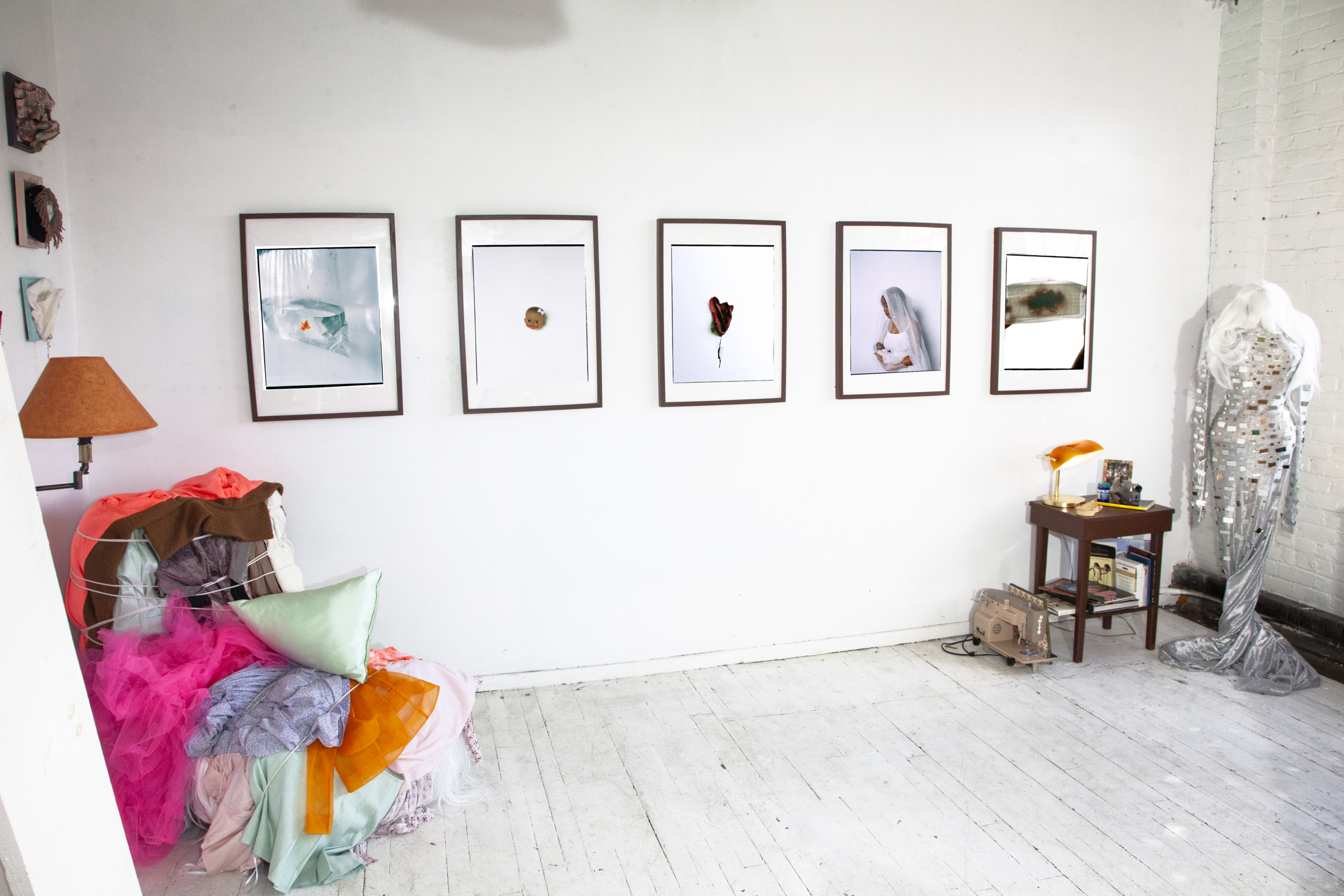The Red Room, a multi-disciplinary artist installation in the St Henri borough of Tiohtià:ke / Montreal this past week, was equal parts community, femininity, and unfettered artistic expression. Devoted to women’s intimacy, the piece, presented as an installation comprised mostly of photographs, textiles, ready-to-wear, and paintings, was borne out of a deep bond between two collaborating artists: Luna Mehriban Nashar and Jessie Emile. A quintessentially heady Montrealaise Vernissage Dj’ed by SahdGuru kicked off the weeklong exposition exploring conceptions of corporeality, feminism, consent, intimacy and community.
“In the heart of the space is a fertile tree, symbolizing the woman and the ugly” the two artists write, where a bundle of twigs and flowers form a bouquet in the bowl of a toilet nestled within the space. Clothes hang from the ceiling, paintings of the female anatomy abound, and “p*ssy pockets”, both functional and symbolic items for purchase, all exist in tandem in the space, inviting the spectator into the joyful chaos of the private world of the feminine.
We spoke with the two artists about the concept, their artistic practices, and what consent means to them.
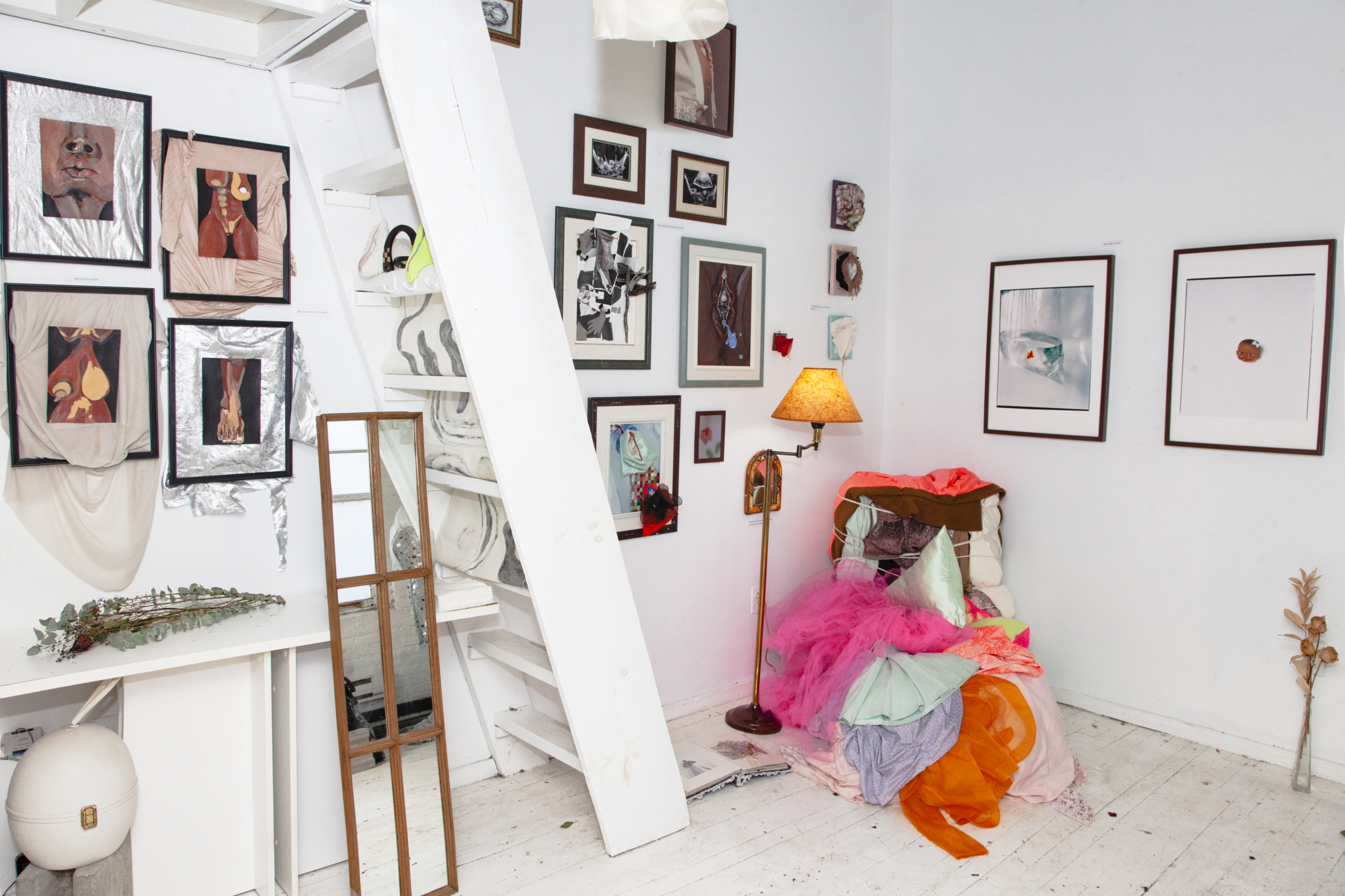
Explain to us the concept of the Red Room, what were you trying to achieve with this installation and where did the concept of the Red Room originate?
Luna: Originally, we wanted to create a temporary space to celebrate art and womanhood. Also, our goal was to bring the viewer closer to the artist which is why The Red Room is staged in the atelier. People were able to consume our art in the space in which we created it. It was a very intimate moment for us. The Red Room is passionate. It is angry. It is bloody. A mess, all fragmented pieces of our womanhood that are presented in the cradle of Montreal’s industrial revolution, the Saint-Henri borough.
Jessie: The Red Room is a representation of an intimate space curated as a bedroom allowing a space to be. I think the representation of the color red is important. Known to be the color of love and violence it’s also the color of blood. And the emergence of life or death produces blood in a metaphoric way. In other words, the Red Room comes from this idea of existing freely.
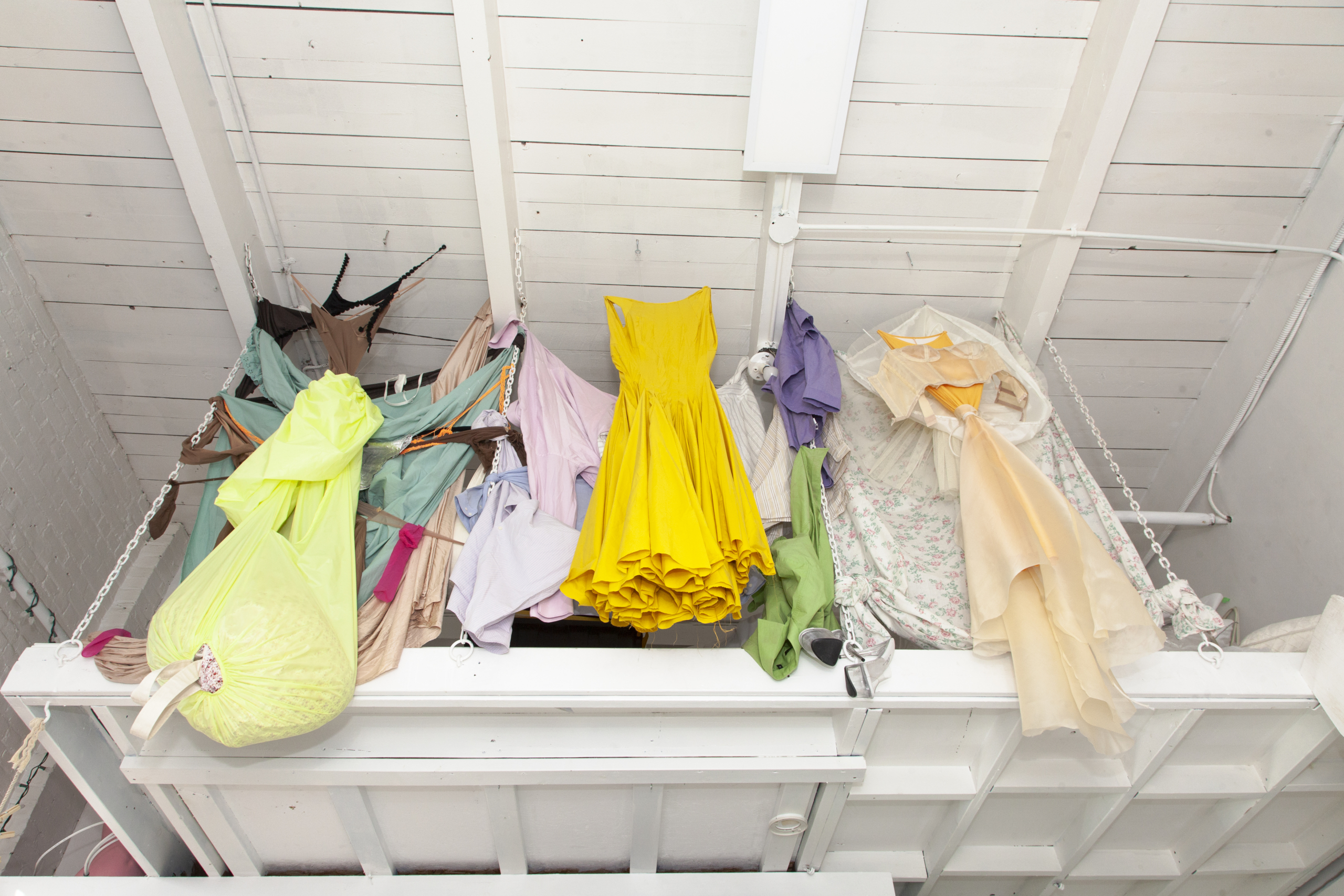
The Red Room is both spatial, tactile, and visual, comprising a variety of media. How do you think the different forms in the space speak to one another?
Luna: The different forms of media are the dialogue between Jessie and myself. For example, the IUD represented by a cross in the white p*ssy pocket answers to Jessie’s frame Marie. The virgin is also seen in the bathroom installation, next to the hand. I think all those forms are similar to different languages expressing what the Red Room is all about. That way, the viewer can understand different aspects of the room through their own language.
Jessie: I think it suggests that there are many ways to experience an environment. I believe it brings us back to our senses.

“In the heart of the space,” you write, “is a fertile tree, symbolizing the woman and the ugly.” Explain the juxtaposition of the woman and the ugly and the concept of their linkage to the tree.
Luna: Women are often portrayed as beautiful. Juxtaposing the term with the opposite of what it is defined by, a malaise is built. From that, I am able to question what is a woman and what is beautiful or ugly. It is still troubling for me. But I feel safe because it allows for self-expression that goes beyond the norms. Traditionally, the flower is very feminine. However, Jessie and I wanted to represent womanhood with something powerful, that lives for centuries and that has strong roots. Hence, the tree. Wouldn’t you love a bouquet of branches?!
Jessie: Whenever I think of a body, I think of a tree. I’m not sure if we realized, but trees have no choice but to go through different seasons. If I was a tree, my favorite season would be Spring because it is the blooming preparation season, but also where the dead are discovered under the melting snow (like broken branches).
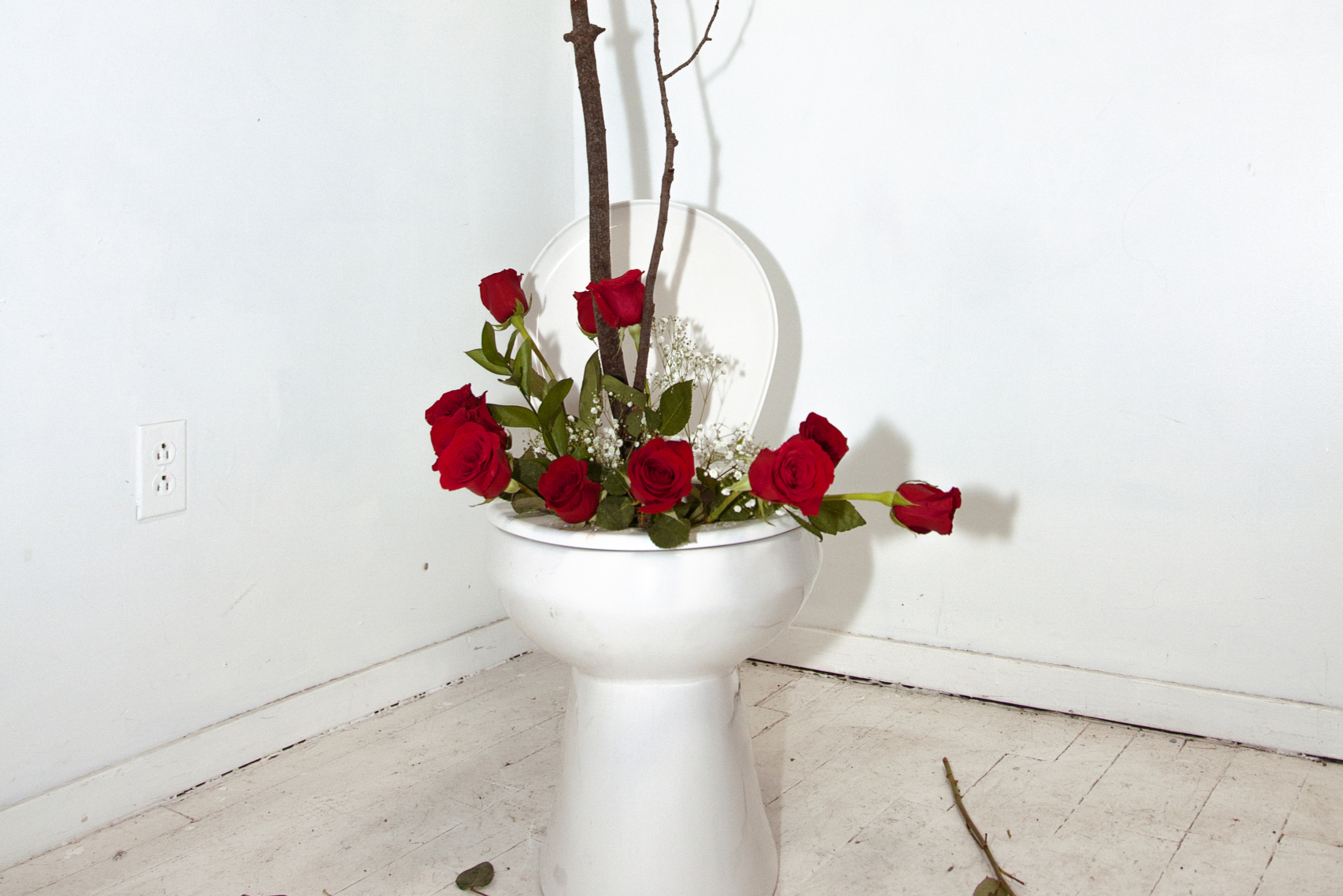
The Red Room celebrates all aspects of femininity and generates an intimacy with the spectator, we are invited into the privacy of the room by virtue of your invitation/consent, what does this mean to you as both artists and women?
Luna: Every woman I know has a story to tell about consent. As an artist, the work of my choosing is seen by others. What was interesting to me in the Red Room, is that I also became the voyeur: I watched you looking and commenting on my art. It didn’t matter what you thought, you were here. That was a moment in which I reclaimed my art and my space. I think that power came from the mutual consent I shared with the spectator.
Jessie: To me, being naked has to do with shame, acceptance, and consent. I come from a religious background where intimacy is to be kept a secret. Sexuality was not really something I feel we were comfortable talking about within my environment let’s say. And I think this is something I’d like to see evolve more and more. Intimacy involves self but also others through acceptance, consent, and communication. Like Luna said; “La nudité c’est la vérité. And as an artist, I’m ready to overcome the shame of being through art-making and exposure.
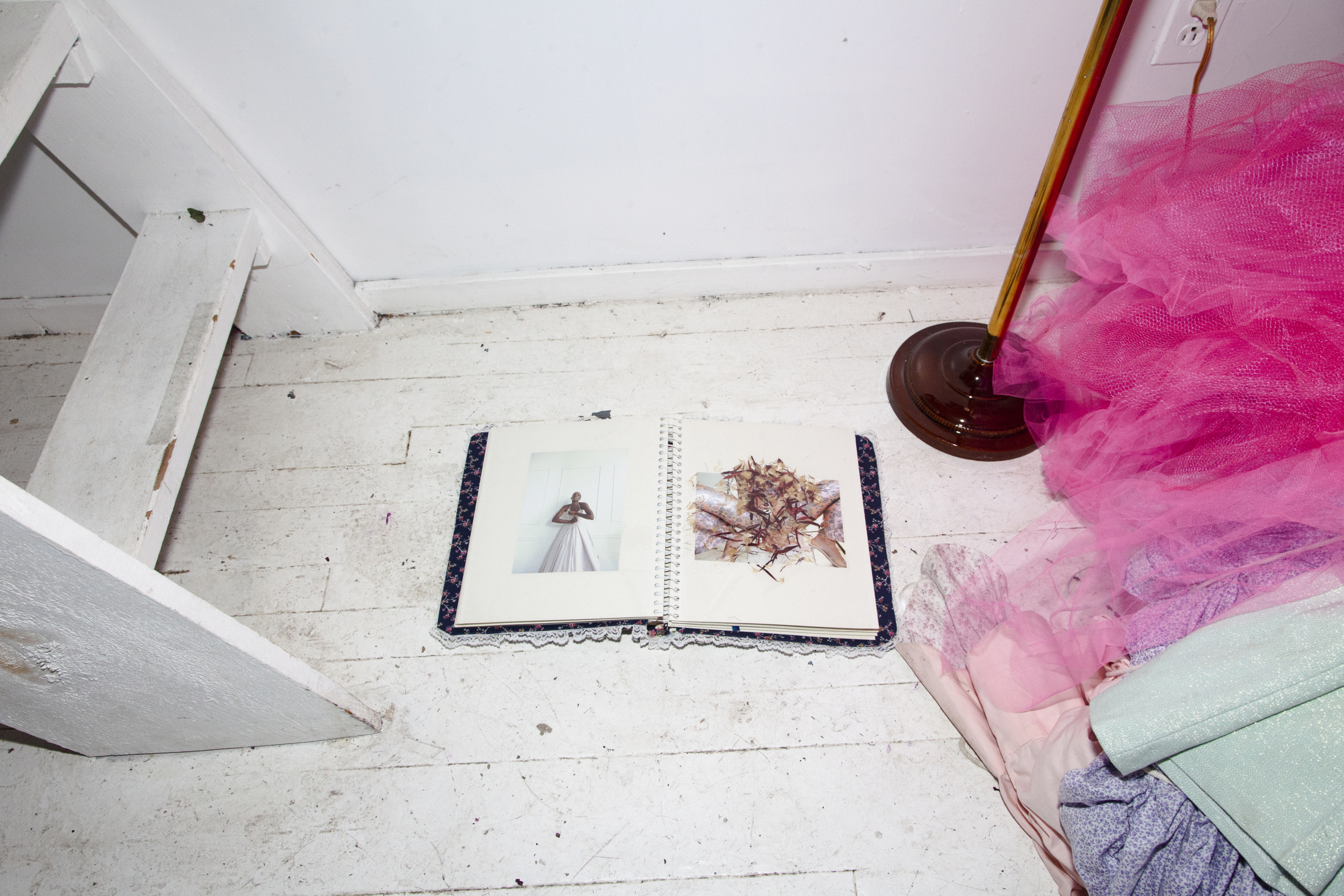
Tell us a bit about your artistic practices, and how this collaboration came about? How is the Artists Can’t Sell collective involved, and what is their mandate?
Luna: Being an architect, I enjoy very structured frames. However, with clothing, I am capable of experimenting with more fabrics in which I am discovering the fluidity of form. The creation of the collective Artists Can’t Sell is based on my wish to be the guardian angel to all up-and-coming artists. It’s difficult to put yourself out there and to be taken seriously by big corporations while remaining true to yourself. ACS has the mandate to give the space for newcomers to express themselves. For example, I, myself, was able to present my first accessory collection entitled P*ssy Pockets.
Jessie: Luna and I met a little more than a year ago when she was looking for a photographer to shoot her designed pieces. Since then we have never let go of each other. I think Luna and I share a common interest that has to do with womanhood and thirst for expression. We’re both also really intuitive and coming from a religious family which made it even easier to connect I believe. This collaboration came unexpectedly and happened intensely and very fast. We wanted to do something “small to prepare for our upcoming exposition titled Our Women with the Artist Lana Denina. We decided to call ourselves Artists Can’t Sell to present this first exhibition we curated because we believe artists have a lot to say. We haven’t yet had the chance to discuss the future of this collective but we know it’s bigger than us.
How can our readers support your work?
Luna: Creating dialogue and discussion is the most rewarding feeling. I love when people reach out to me and share the experience they had while consuming my art.
Jessie: I’m not sure what type of support I need yet, but readers can find more of my work on my website www.jessie-emile.com. Other than that you can connect with me on my Instagram and YouTube account. I use my socials to announce art shows.
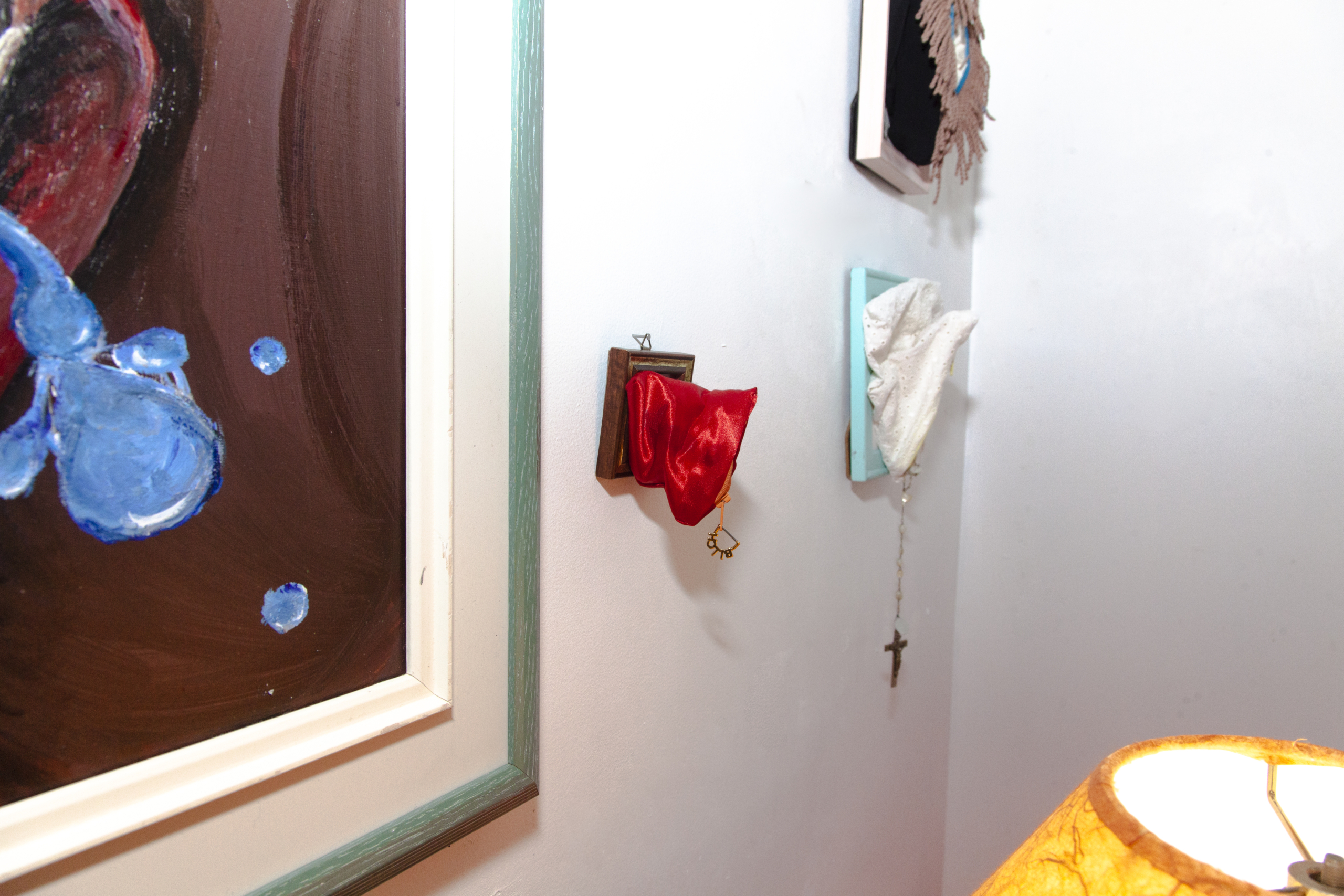
What is on the horizon for you both in the coming year?
Luna: I would like to continue to connect with new artists. More collaborations. Also, it is very important for me to stay inspired. My challenge for 2022 is to show more direction in my art, so my story is better understood.
Jessie: We hope to connect with other artists to help and unify the communities at a local and global scale (but only if it is God’s plan).

Cody is the Editor in Chief and senior contributor at liminul.
He is a photography aficionado, fashion enthusiast, avid Lana Del Rey fan, and lover of all things aesthetically pleasing.


